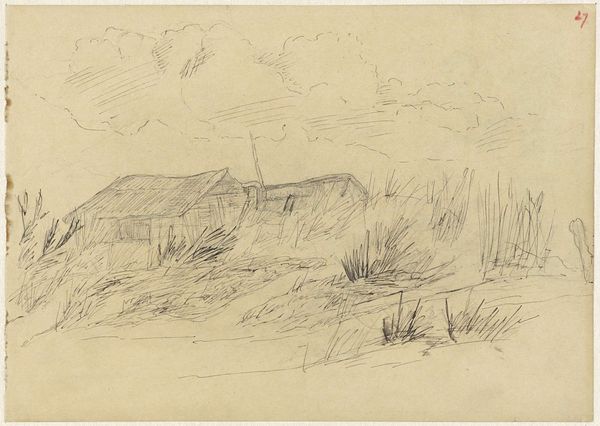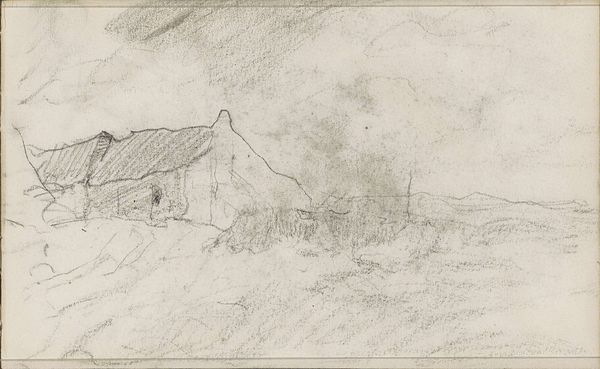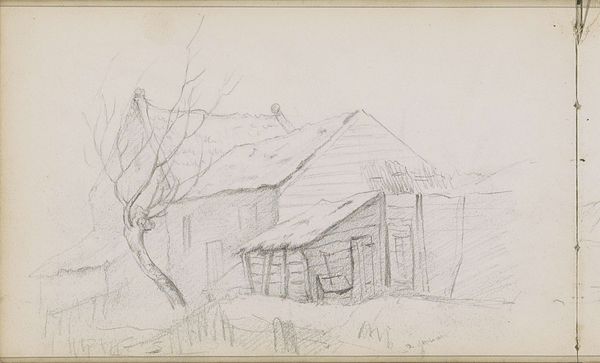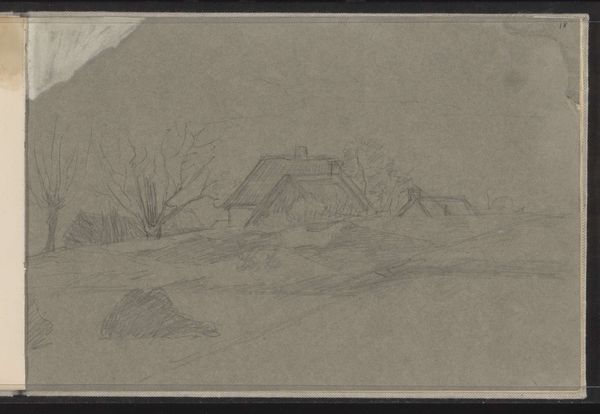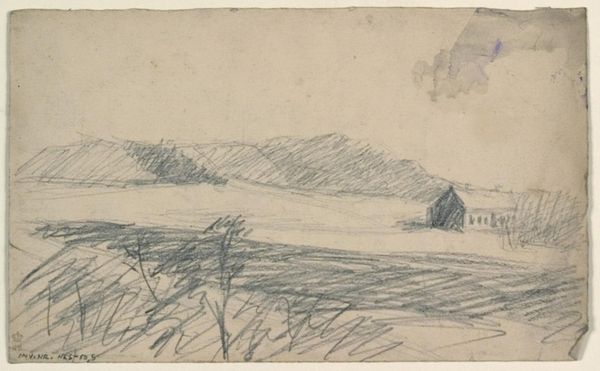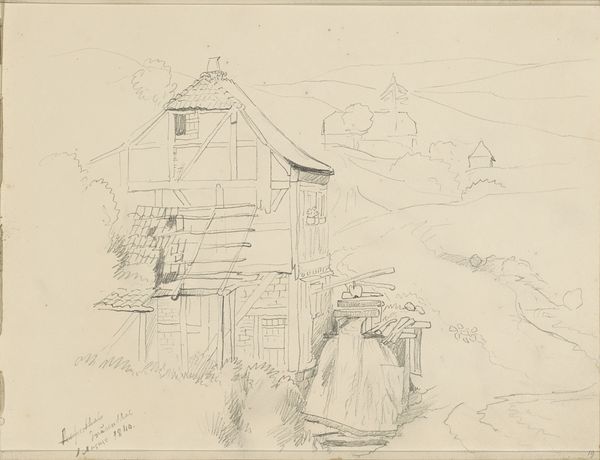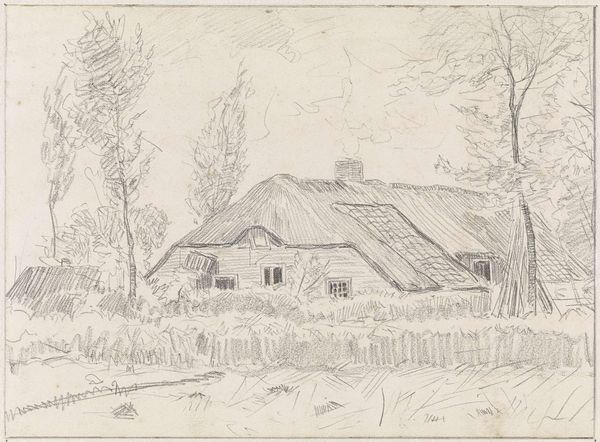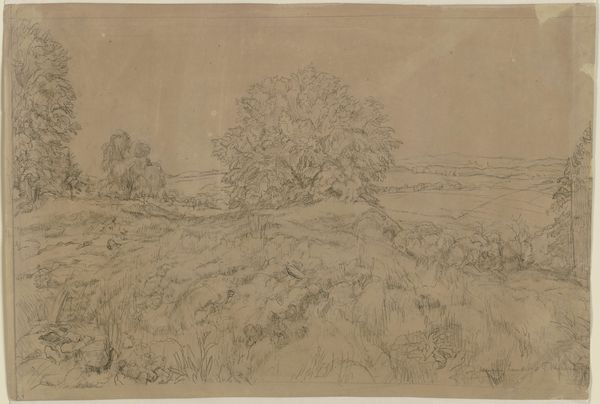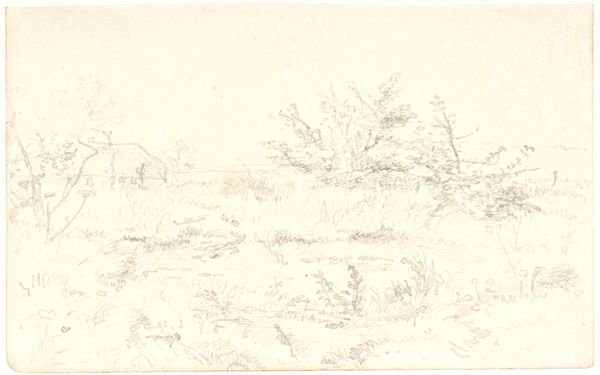
drawing, pencil
#
drawing
#
impressionism
#
landscape
#
pencil
#
realism
Dimensions: height 201 mm, width 284 mm
Copyright: Rijks Museum: Open Domain
Curator: What strikes me first about Jozef Israëls’ “Farmhouse by a Country Road” is its ephemeral quality, despite the subject being seemingly permanent structures. The pencil work creates a hazy atmosphere. Editor: Yes, there's an almost unsettling quality. The visible texture of the pencil strokes draws my attention to the work itself, rather than what’s necessarily represented. There’s a clear attention paid to depicting the labor required to both create and inhabit these places. Curator: Precisely. Look at the marks around the buildings— the texture becomes much more intense. Israëls is careful with how the landscape is rendered around human intervention, almost contrasting natural growth against cultivated and maintained construction. Editor: I find it interesting to note that Israëls chose the pencil medium in service of such subject matter, as he positions a farm that could represent rural livelihoods and a class of laborers whose history can be traced along political and socioeconomic structures. How the artistic material connects or diverges from class status of its subject seems pertinent to my thinking. Curator: You’re right to point that out, and perhaps it explains that somewhat blurred finish. This piece falls into the broad years of 1834 to 1911; could it be seen as documenting a disappearing way of life through the softness and muteness only pencil on paper can provide? Editor: Possibly so, I also see it as documentation that acknowledges the lives lived within such spaces, highlighting the significance of capturing not only the physical but the unseen and often dismissed aspects. And those thatched roofs required near constant upkeep. Curator: Indeed, and speaking of upkeep, the way the composition emphasizes the small path leading away into the rest of the scene, to me, creates an implication of journey, and hard manual labor, in particular, with moving crops or animal goods. It makes one consider accessibility for those that have no choice. Editor: Yes, that worn pathway tells stories beyond just getting from point A to point B. The implications of gendered division of labor are suggested even in this subtle sketch, if we begin to consider the different tasks done on that road and within the home. Curator: I agree entirely. It offers insight into both what the work is representing as well as a material depiction of everyday routine labor that we would otherwise gloss over. It certainly adds layers of meaning to this humble pencil drawing from the Rijksmuseum’s collection. Editor: Ultimately, this work reveals that something seemingly straightforward holds nuanced ideas related to material status and political context.
Comments
No comments
Be the first to comment and join the conversation on the ultimate creative platform.
